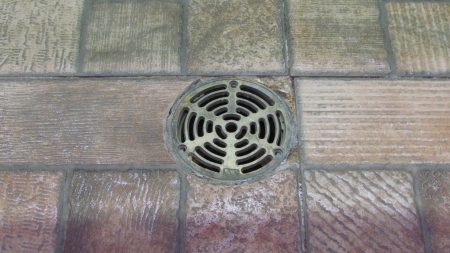If you have a basement, finding out how to clean a floor drain in the basement is important, regardless of whether you have a leak or blockage in your basement floor or not.
The reason is, that drain has to be cleaned to prevent clogging in the first place. And if you do your routine cleaning, you’ll be able to notice a leak sooner rather than later.
Also, if you get to this soon enough and your drain is not terribly clogged, you should be able to do the cleaning on your own. Now, let’s get to it.
Table of Contents
Unclog
Whether or not you’ve started to notice anything out of the ordinary, there is sure to be dirt and debris stuck in the drain pipe.
This is because as water flows across the floor and into the drain, it carries with it everything in its path. And they all end up in and maybe through the drain.
Overtime, the dirt and debris will prove too much for the drain, causing a blockage.
So, when you want to clean out your basement floor drain, the first thing to do is to unclog the drain.
To do that, you’ll need to remove the grated top. If yours is screwed on, you know that you’ll need a screwdriver to get it off.
But before you do that, make sure you are wearing protective gloves and maybe even a work apron and clothes you care nothing about because this is about to get dirty.
So, get out as much as you can without forcing anything back inside. Make sure that you have a waste bag with you so that you can immediately put what you’ve gotten out in. Tie securely and then dispose off.
Clean
For this stage you’ll need a lot of hot water, some baking soda and vinegar. The idea is to flush out and then disinfect the drain.
So, pour the hot water through the drain with a bit of force. This might force out some of the debris and such that you were not able to reach with your fingers.
When you are sure that the passageway is clear, try to coat the inside of the drain with baking soda as much as you can.
Baking soda should be able to soak up the foul smell of the drain then you can flush out the baking soda with vinegar.
Vinegar is supposed to help with the smell and also kill of the bacteria that your drain must have been harboring.
So, allow the vinegar to sit for about 10 to 15 minutes before you flush it out with some more hot water.
Wash
Remember the grated top you removed? If the inside of your drain is filled with filth, that top will be too. So, remember to wash it before you fix it back on.
You could wash it with regular dish soap and then rinse it in some water with a little bit of vinegar. Remember to screw it back in if it has screws.
What Could Happen If A Basement Floor Drain Is Not Regularly Cleaned?
One very common thing that could happen is that the drain could become clogged which will make it difficult for water to pass through.
And then, sooner rather than later, water won’t even be able to pass through anymore, resulting in a pool of water in your basement that will only get bigger.
Of course, this pool will not just contain water. There’ll be the usual debris and dirt that caused the blockage in the first place.
So, this combination of stagnant water and rubbish will start to stink up your basement.
And at this point, you just have to clean out the mess which would be pretty disgusting.
Unfortunately, this is not the worst of it. One thing you ought to fear when it comes to having stagnant water around your house (no matter how little) is mold.
If you leave your basement floors with stagnant water for too long, mold is not very far from you.
And if you have a mold problem, we are looking at a different cleaning altogether, especially considering that mold could be life threatening.
We have an article on how to get mold out of your house, so you might want to check it out if you already have that problem.


